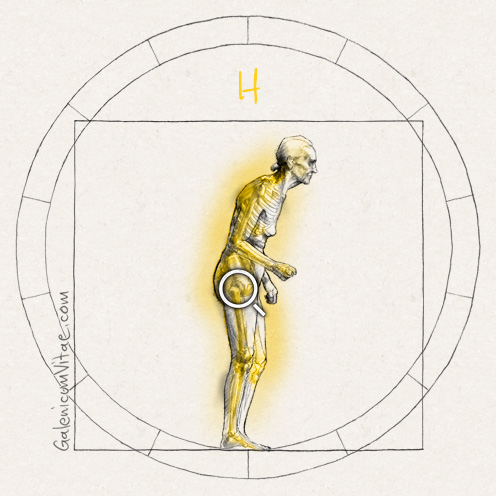Osteoporosis is a disease in which bone becomes more porous as the number and size of cavities or cells inside it increases.
Risk factors. A person reaches the maximum amount of bone mass at age 30-35 at which time it no longer increases and thus we live the rest of our lives with the bone mass we have at that age. In women, peak bone mass is usually lower than in men. Furthermore, when menopause arrives and the ovaries stop producing female sex hormones, some women may experience accelerated and rapid bone loss, which can produce postmenopausal osteoporosis.
Another common form of osteoporosis occurs in the elderly. It is a consequence of aging and an alteration in the metabolism of vitamin D that can occur at such an age.
In osteoporosis, an overall decrease in bone tissue occurs, meaning that the proteins that make up the bone matrix and the calcium minerals that are deposited on it are lost. Osteoporosis causes “bone” loss, meaning that the bone gets thinner and loses its thickness. In this way, the bones become less resistant, cannot withstand impacts or falls as well, and they fracture more easily.
Bone mass is the amount of bone (consisting of proteins and calcium salts) a person has at any given moment in life. Bone is nothing more than a dead organ, it is lifeless. Inside it, numerous metabolic changes occur throughout life, with alternating phases of destruction and formation. These phases are regulated by various hormones, physical activity, diet, toxic habits and Vitamin D, among other factors.
Risk factors. You may not notice any symptoms of osteoporosis until you have broken a bone for the first time, notice a loss in height or you detect alterations in your back. If you experience these symptoms, or you have multiple risk factors, it is likely that your doctor will perform a densitometry. This test also can be used to help predict the risk of fracture in patients who have not yet broken any bones.
It can also, though less frequently, occur as a result of a toxin (alcohol), medications (cortisone and its derivatives), endocrine diseases, inflammatory rheumatic diseases, blood disorders or liver diseases.
The goal of osteoporosis treatment is to reduce fractures that this disease causes.
For more information visit:
Osteoporosis
http://www.ser.es/pacientes/enfermedades_reumaticas/osteoporosis.php
Osteoporosis
http://www.rheumatology.org/practice/clinical/patients/diseases_and_conditions/osteoporosis/
What Women Need to Know
http://nof.org/articles/235
What Is Osteoporosis?
http://www.niams.nih.gov/health_info/bone/osteoporosis/osteoporosis_ff.asp

 Digestive
Digestive  Blood
Blood Cardiovascular
Cardiovascular Dermatology
Dermatology Genitourinary,
Genitourinary, Hormones
Hormones Infections
Infections Oncology and
Oncology and Musculo-skeletal
Musculo-skeletal Mental health and
Mental health and Parasites
Parasites Respiratory
Respiratory Senses
Senses Various
Various




